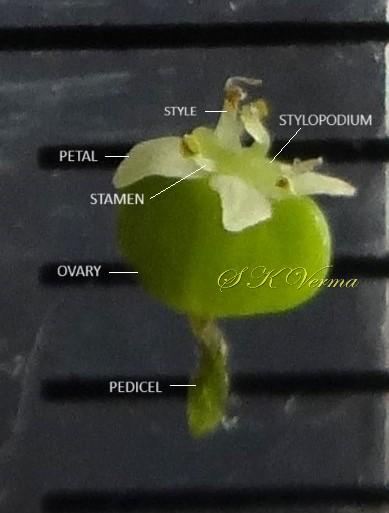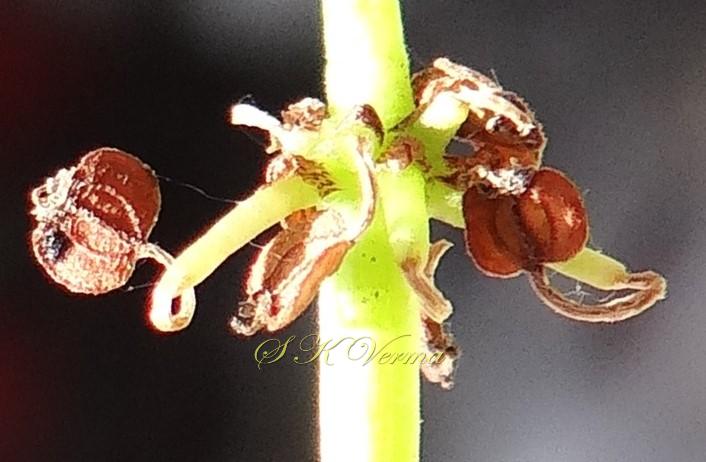HYDROCOTYLE
Hydrocotyle
Tourn. ex L., Sp. Pl. 1: 234. 1753; Gen. Pl. ed. 5. 109. 1754; Clarke in Hook. f., Fl. Brit. Ind. 2: 667. 1879; Fl. China @eFloras. org 14:14; Fl. Pak. @eFloras. org; World Flora Online
Perennial herbs. Stem glabrous or pubescent, slender, creeping or decumbent, diffuse, rooting at the nodes. Leaves simple, alternate; petiolate, peltate or not, petioles not sheathing at base; stipules present or not; leaf blade simple, cordate, orbicular or reniform, entire or parted to the base. Peduncle axillary, elongate to subsessile, bearing a simple umbel or the umbel proliferous into an interrupted, sometimes forked, spike. Involucre present or absent. Flowers small, white, greenish or yellow, subsessile, actinomorphic, bisexual, epigynous. Calyx teeth minute or obsolete. Petals 5, white, greenish or yellow, valvate, plane, ovate, spreading. Stamens 5, alternating with petals. Carpels orbicular to triangular in transection; stylopodium conical to depressed; style short to elongate; stigma conspicuous or not. Carpophore absent. Fruit ellipsoid to orbicular, strongly flattened laterally; lateral ribs conspicuous, slender, acute, rarely obsolete; dorsal ribs acute, rarely obsolete; the secondary ribs not developed; carpophore absent; each mericarp with a layer of sclerenchyma surrounding seed cavity or these cells obsolete; seed face plane to convex; vittae inconspicuous.
181 species
Hydrocotyle verticillata **
Hydrocotyle verticillata
Thunb., Hydrocotyle: 5. 1798; World Flora Online; Centella verticillata (Thunb.) Fourc., Mem. Bot. Surv. South Africa 20: 79. 1941; Hydocotyle vulgaris var. verticillata (Thunb.) Pers., Syn. Pl. 1: 301. 1805.
Aquatic perennial herb. Stem slender, creeping, diffuse, filiform, solid, glabrous, rooting at nodes, roots white. Leaves alternate; petiole slender, up to 20 cm long, solid, glabrous, peltate, petiole base not sheathing; leaf blade simple, +/- orbicular, 1-5.5 cm diameter, both surfaces glabrous; margin crenate or shallowly 8-15-lobed, lobes truncated; number of primary veins 9-14, radiating from petiole. Inflorescence axillary, verticillate and interrupted spikes (or the umbel proliferous into an interrupted spike), simple or once to twice forked, up to 22 cm long, generally shorter than leaves; peduncle up to 17 cm long. Spike bearing 2-7 whorls (or the umbels) of flowers, whorls initially closely packed, later distant in fruiting, each whorl of up to 15 flowers; involucre of 2-3 minute bracts, ca. 1 mm long and 3-4 mm wide. Flowers sessile or subsessile. actinomorphic, bisexual, epigynous, white. Calyx teeth obsolete. Petals 5, white, narrowly triangular/ovate, blunt, ca. 1 mm long, valvate, spreading, later deflexed. Stamens 5, alternating with petals, nearly equalling styles, anthers small. Stylopodium depressed; style 2, short, ca. 0.5 mm long, spreading; stigma small. Fruit broadly ellipsoid, strongly laterally compressed, 2-3 mm long and 2-3.5 mm in diameter, usually broader than long, reddish-brown when ripe, ribs sharply defined; pedicels up to 5 mm long.
Common Names: Whorled pennywort, Whorled marsh pennywort, Shield pennywort
** Placed by some in the family Araliaceae
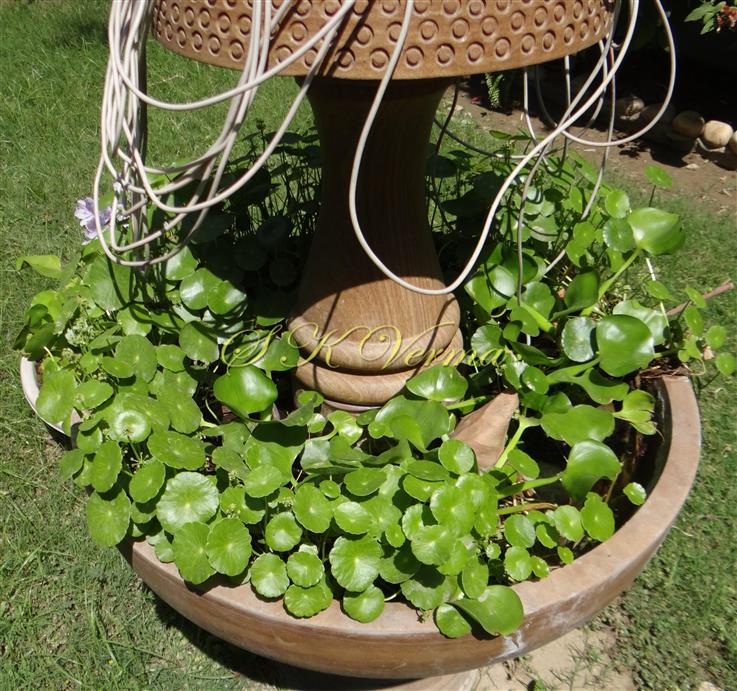
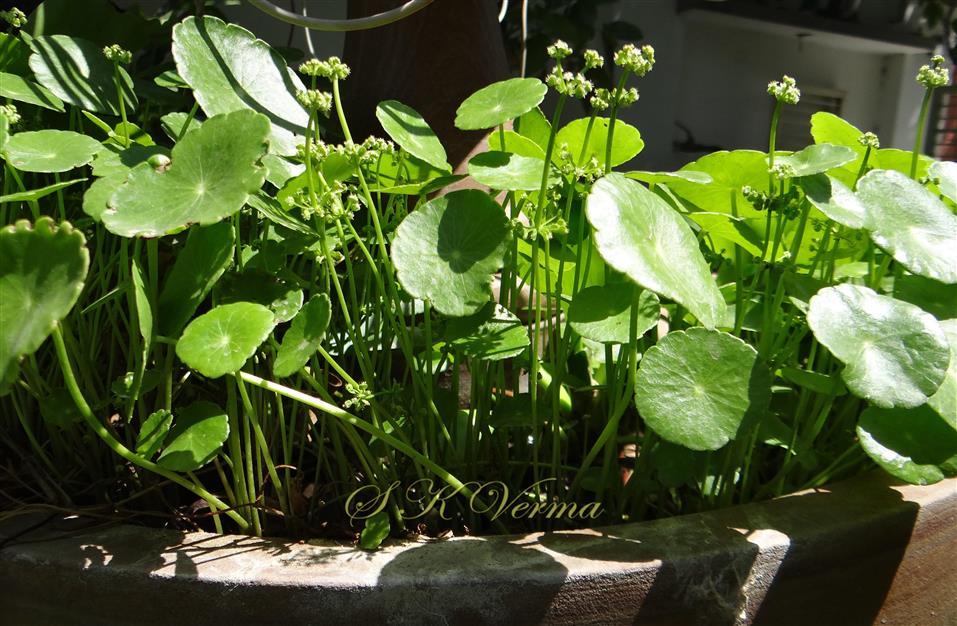
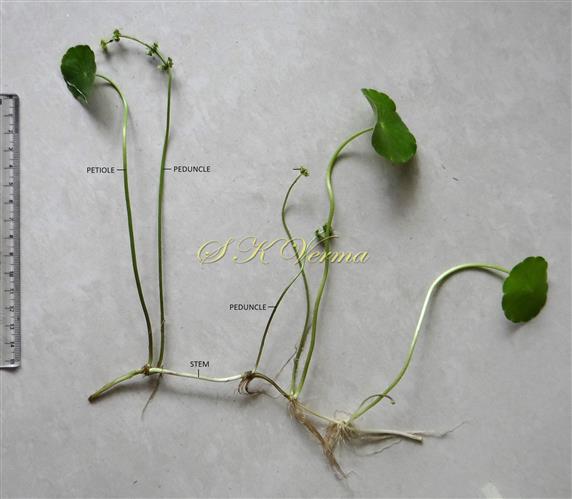
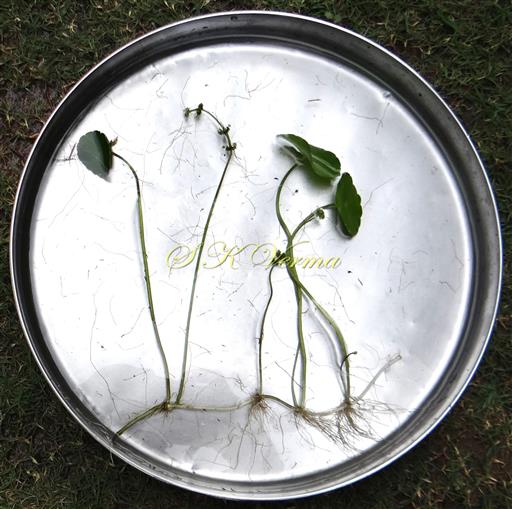
-DSC02355.jpg)
-DSC02357.jpg)
-DSC02356.jpg)
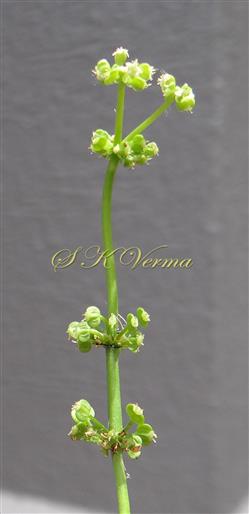
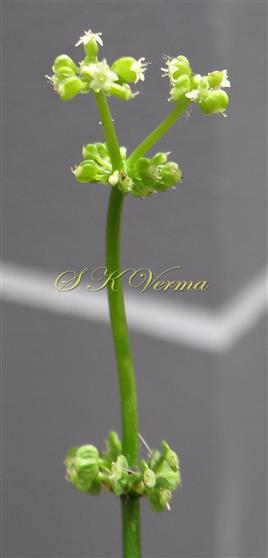
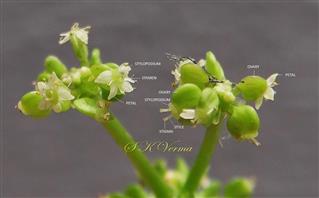

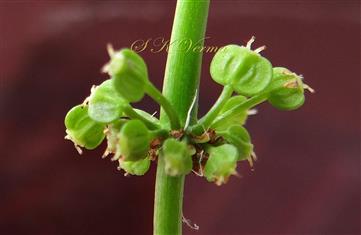
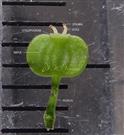






-DSC02355.jpg)
-DSC02357.jpg)
-DSC02356.jpg)



